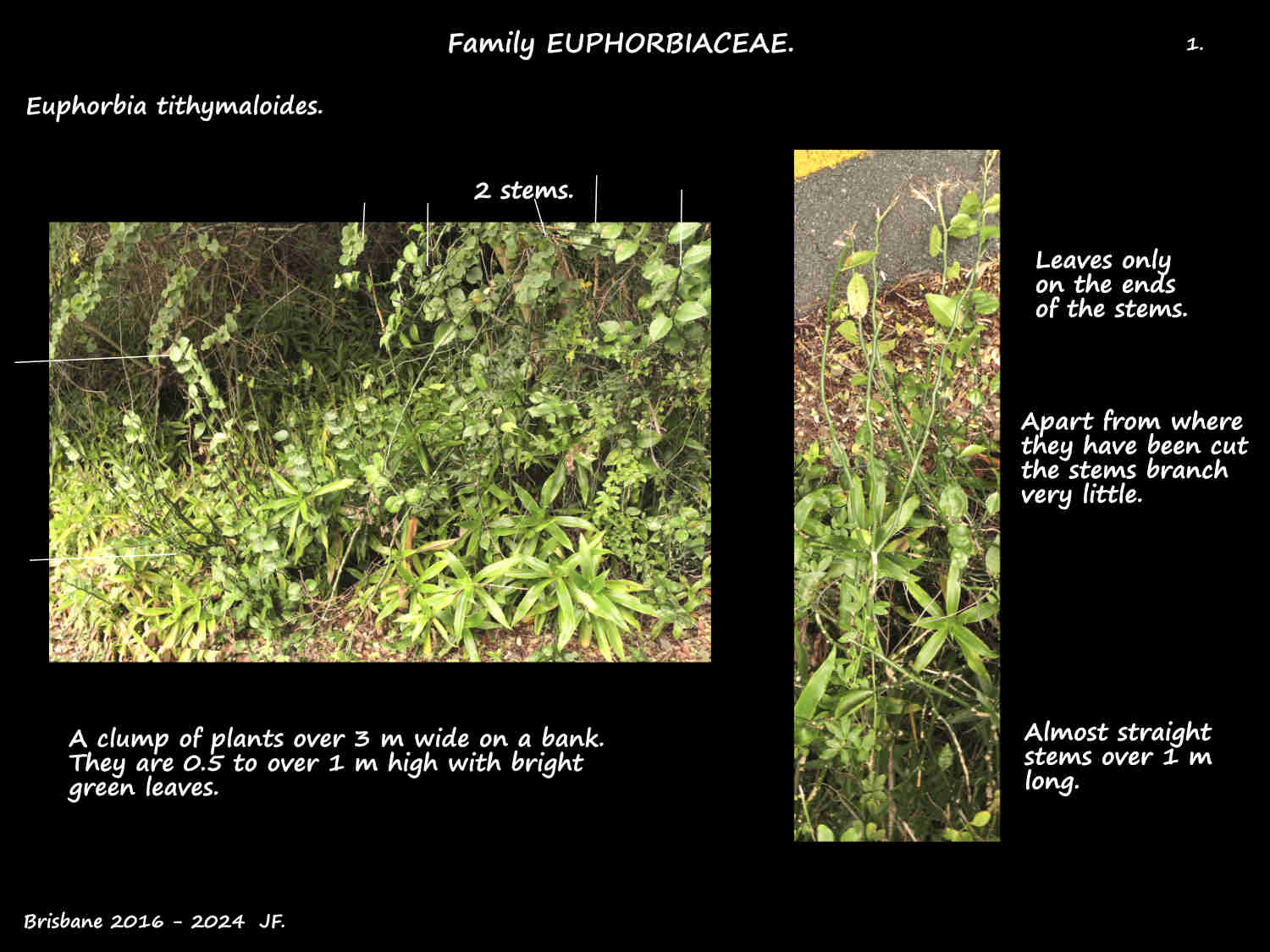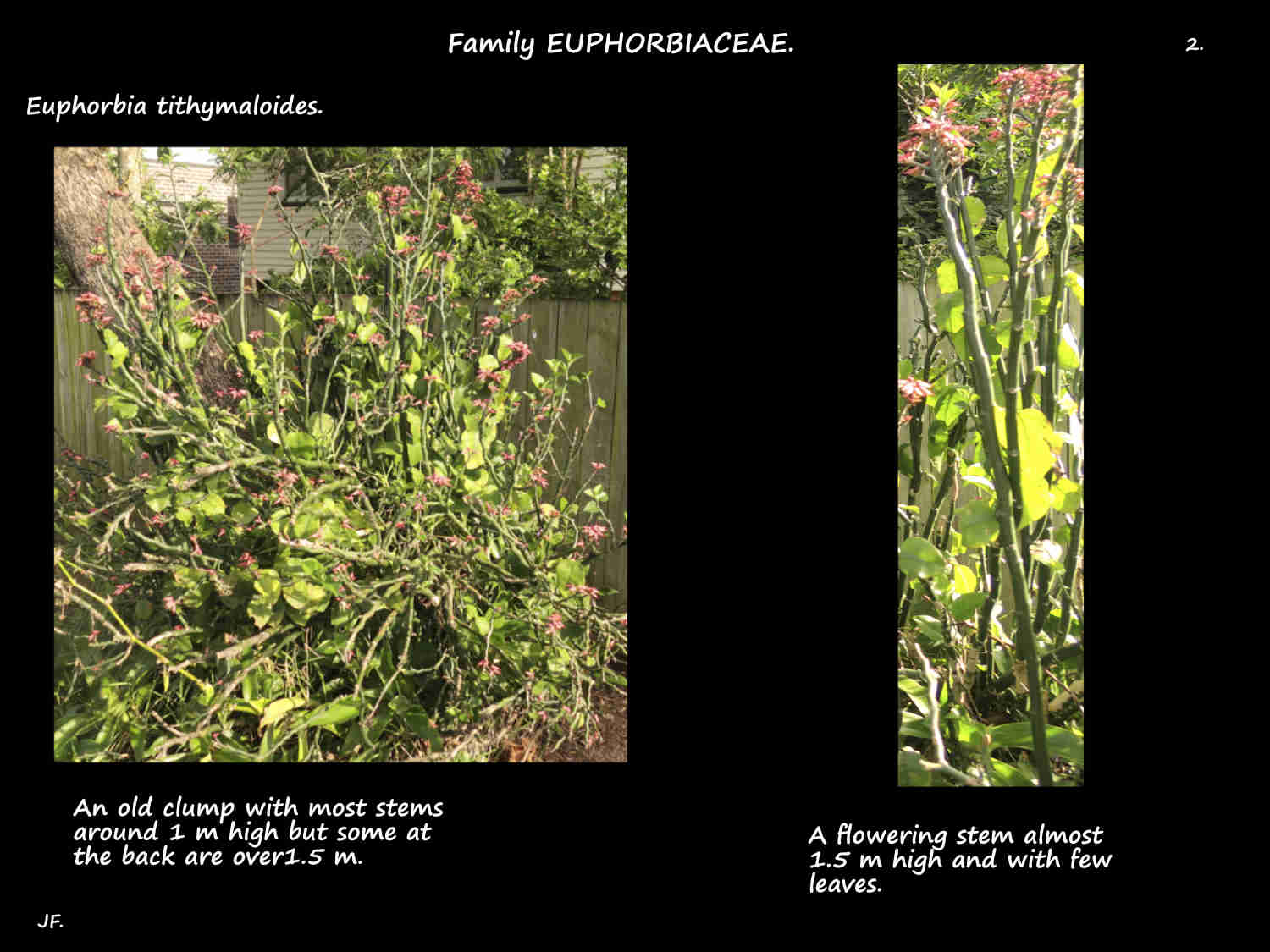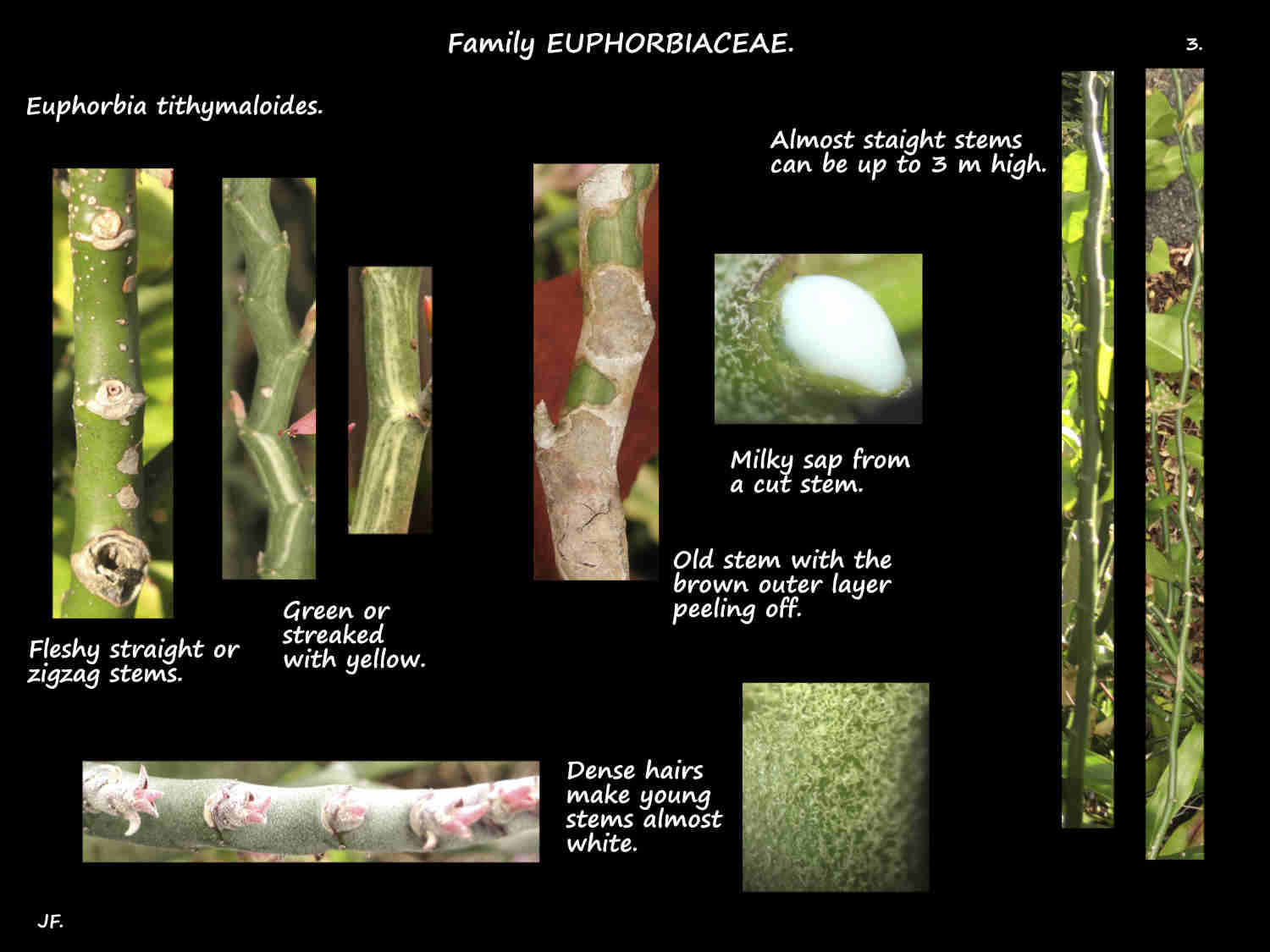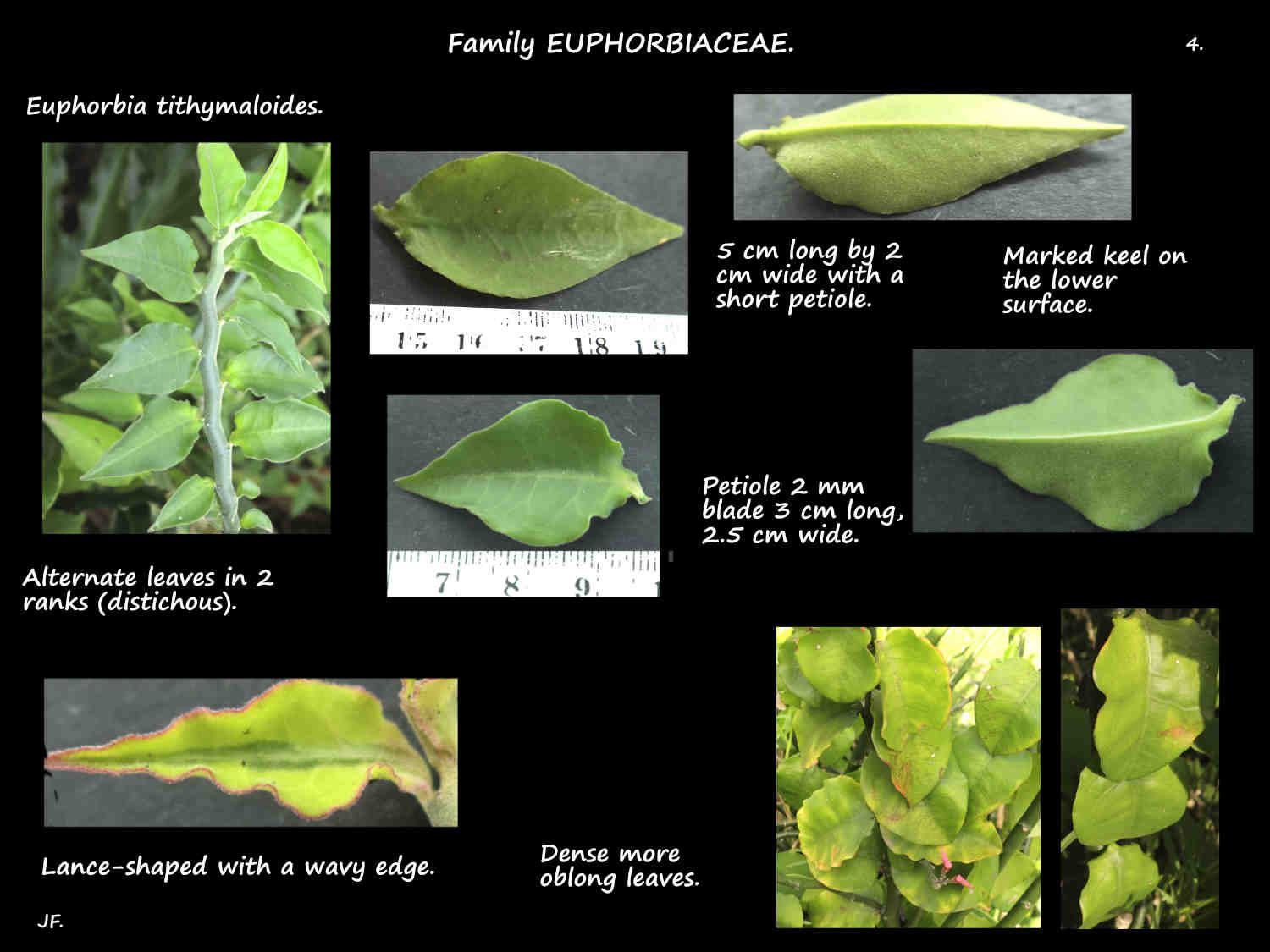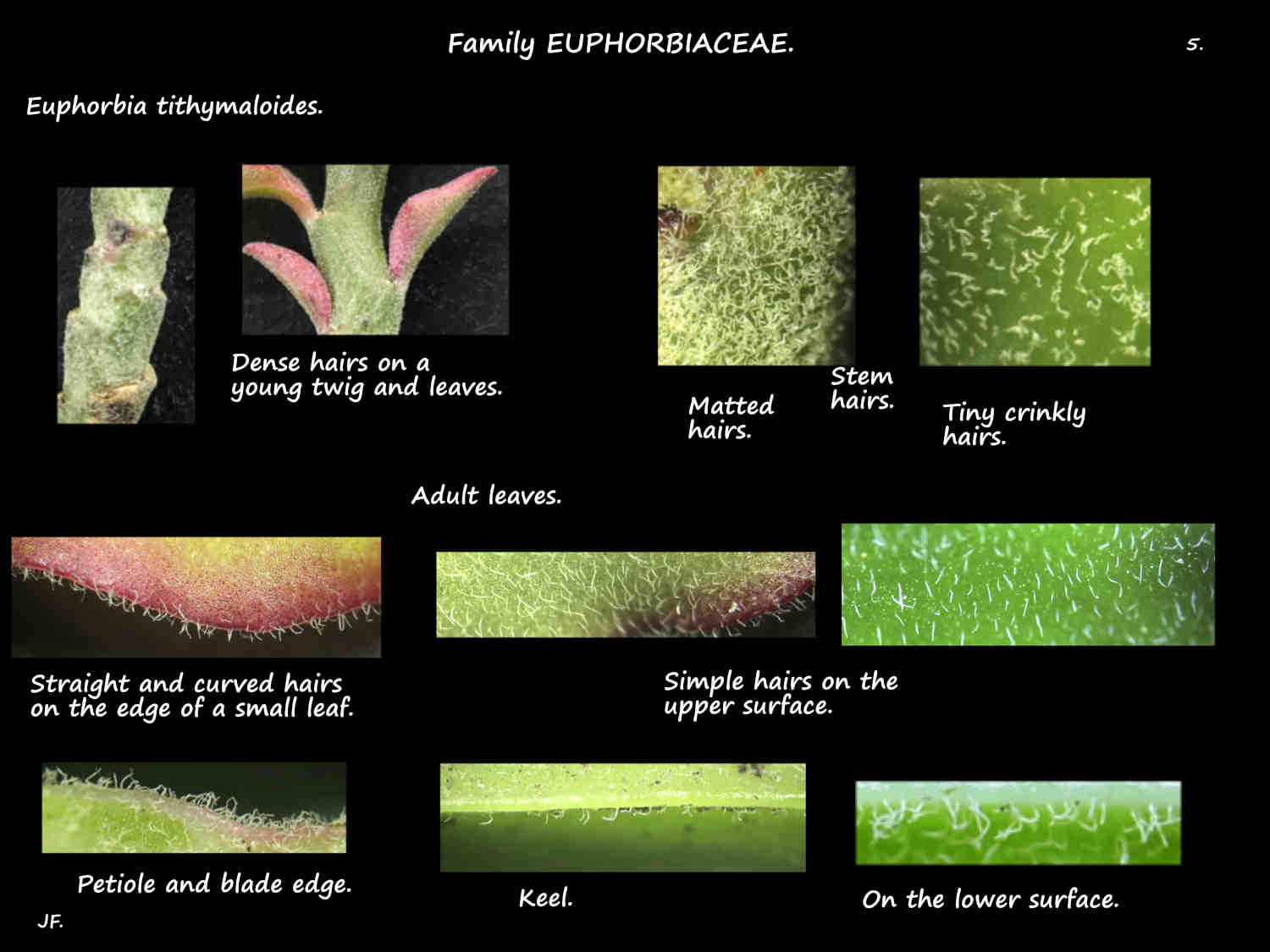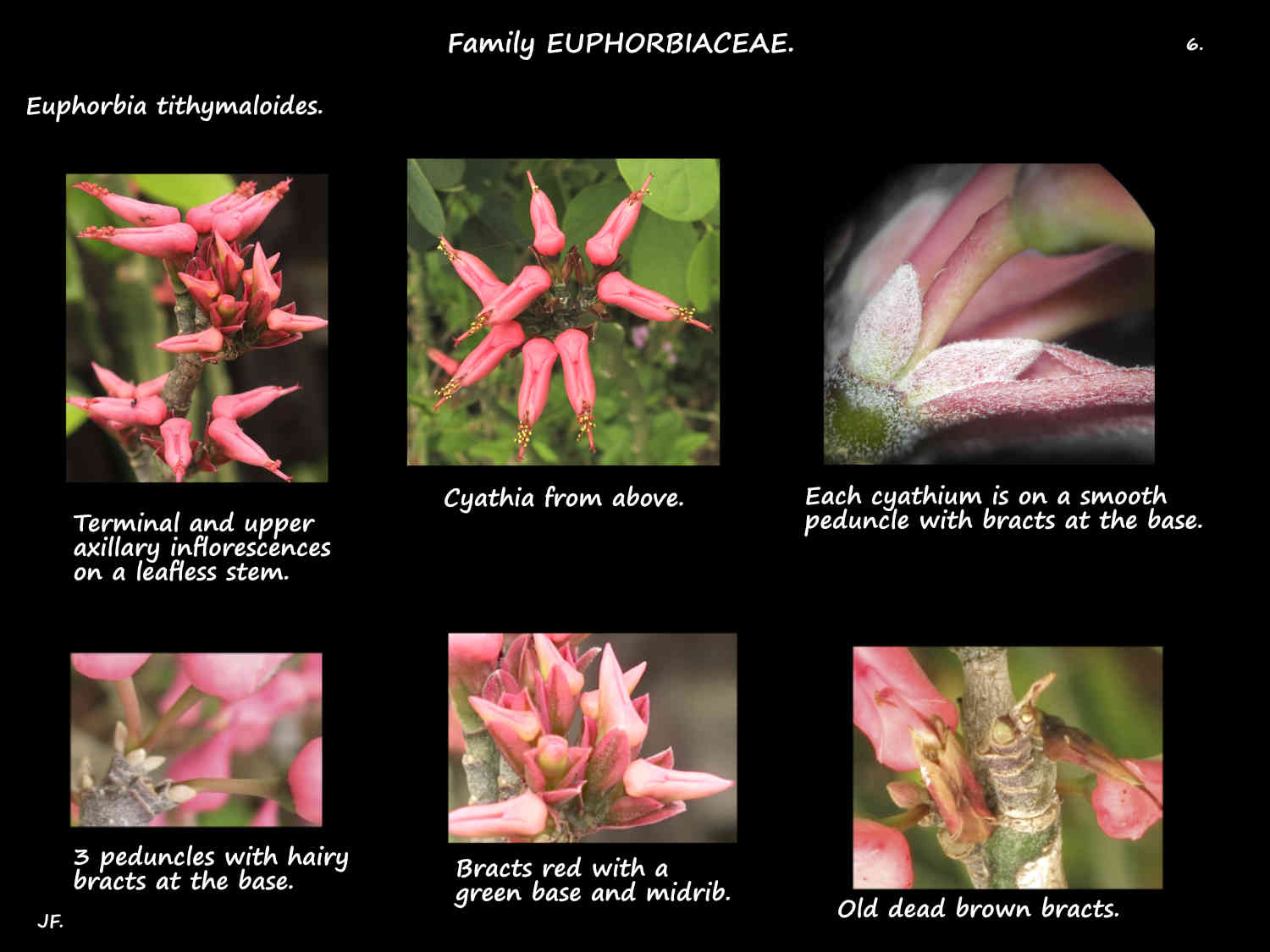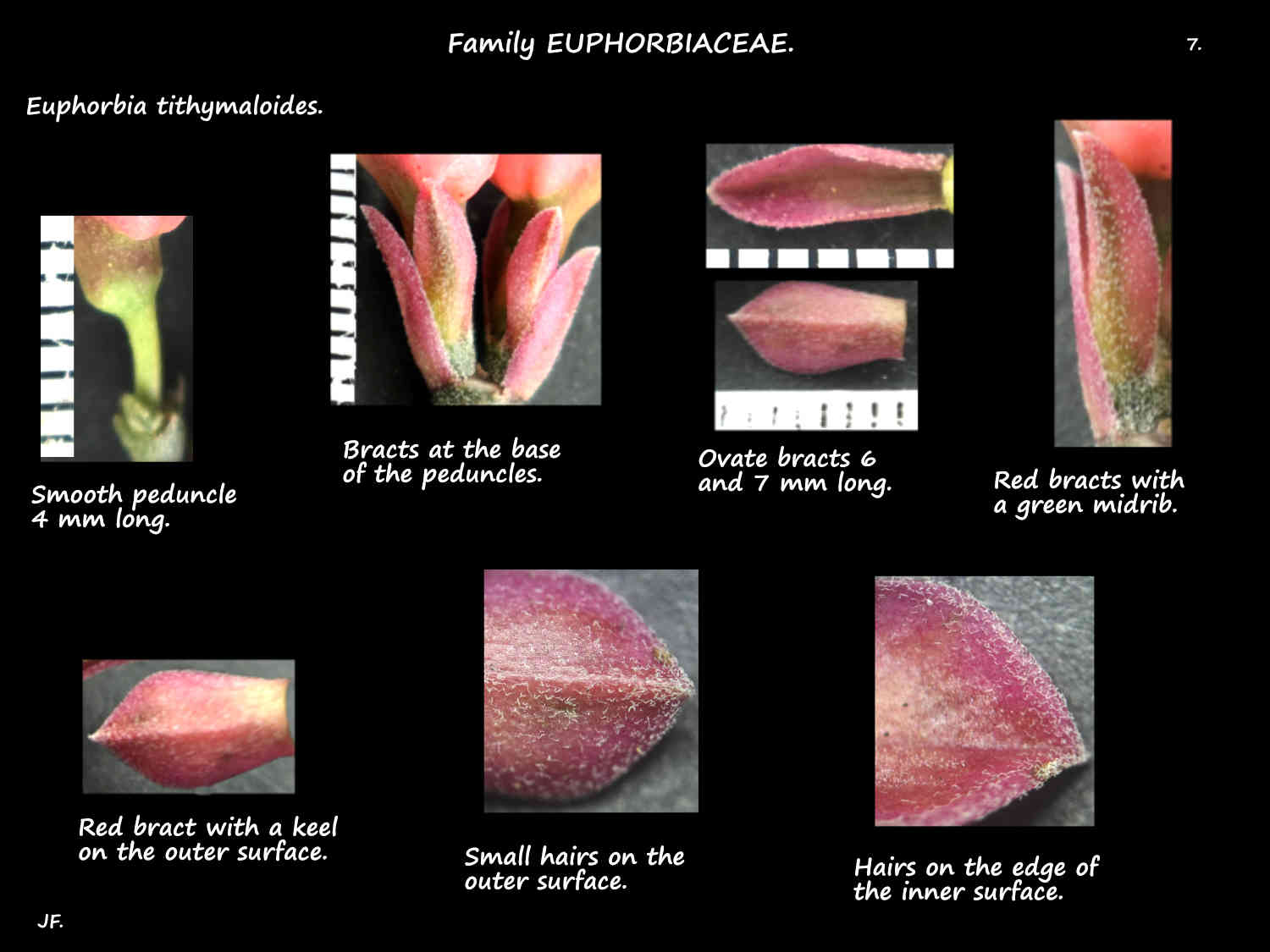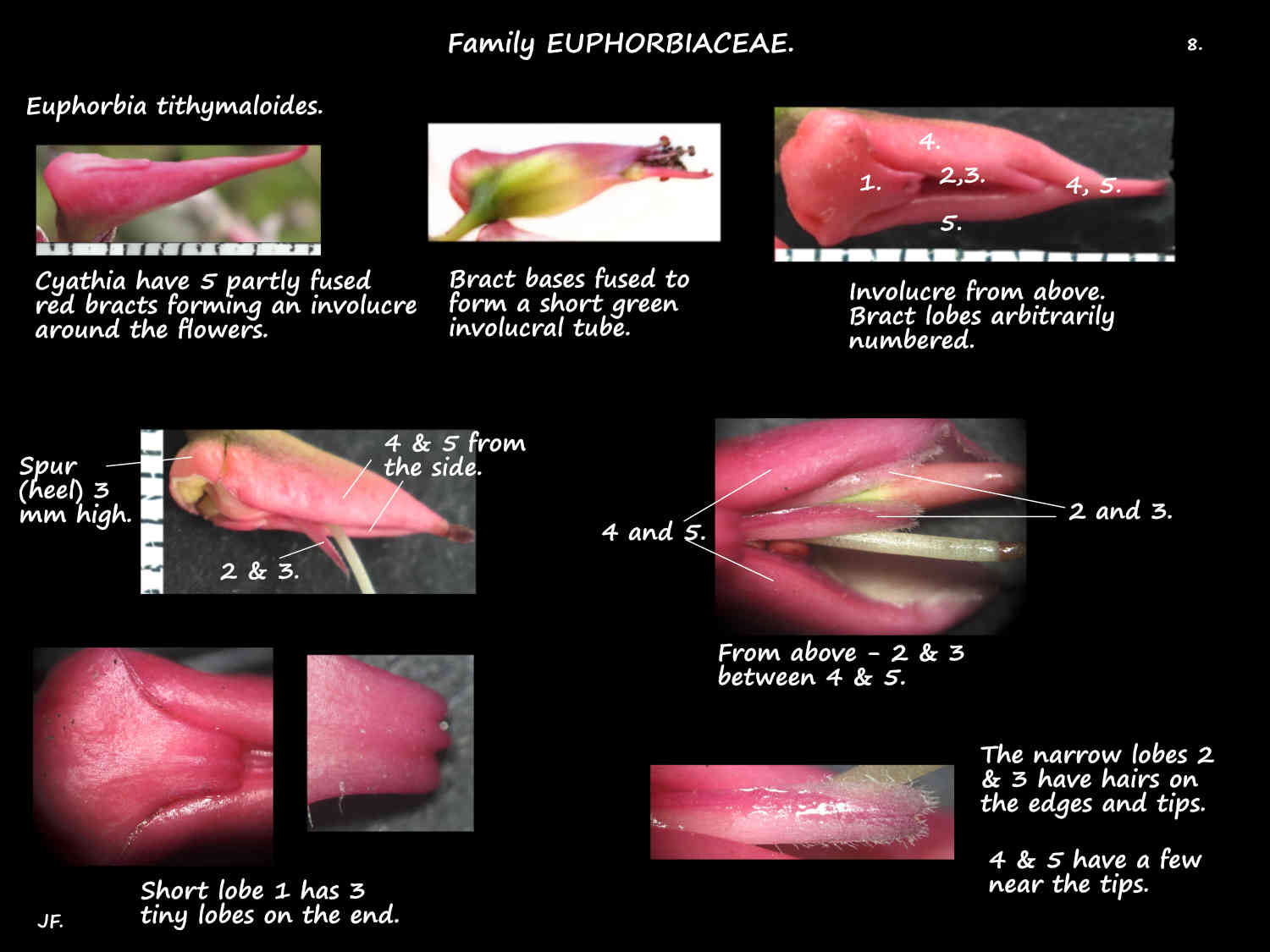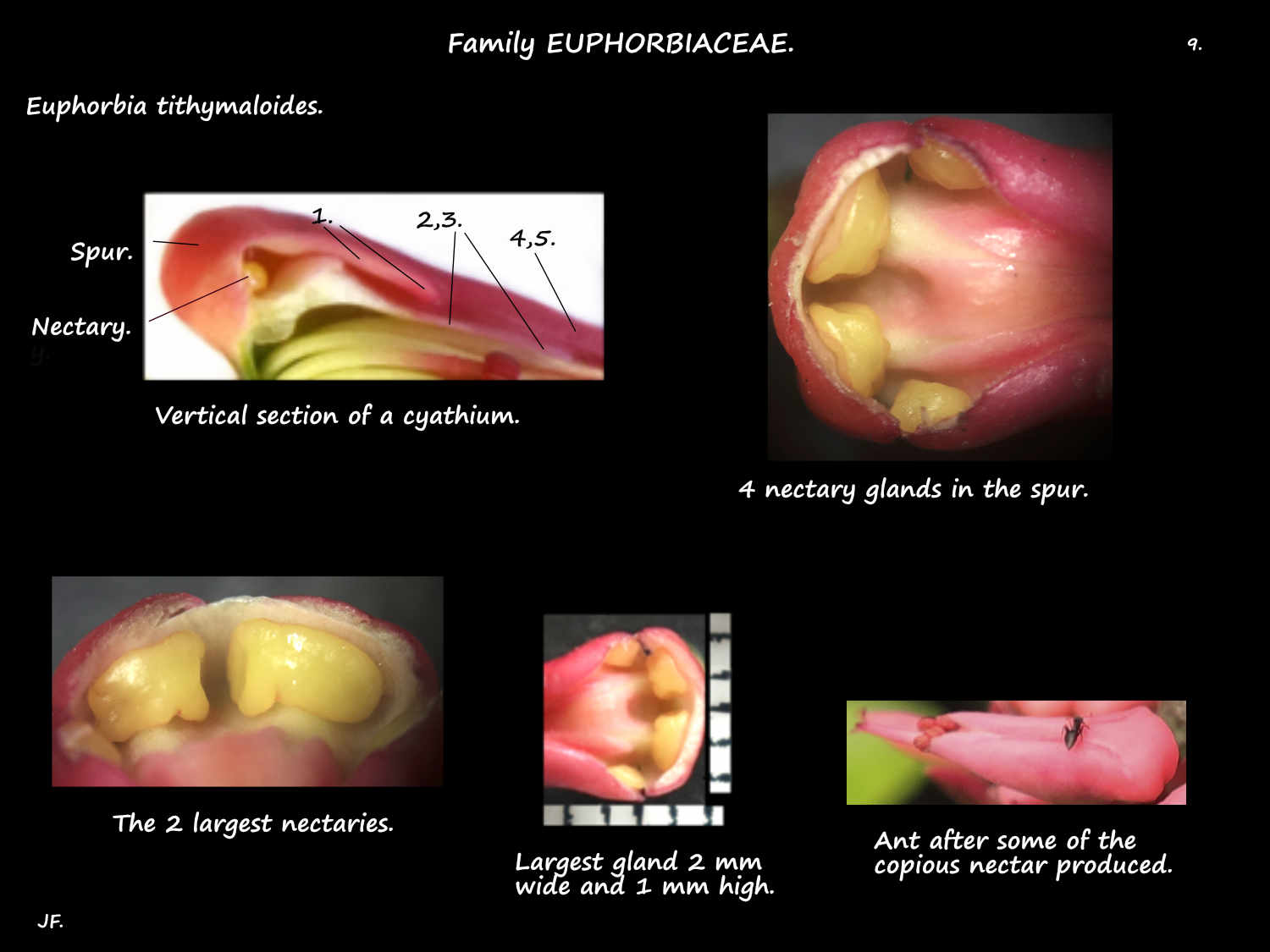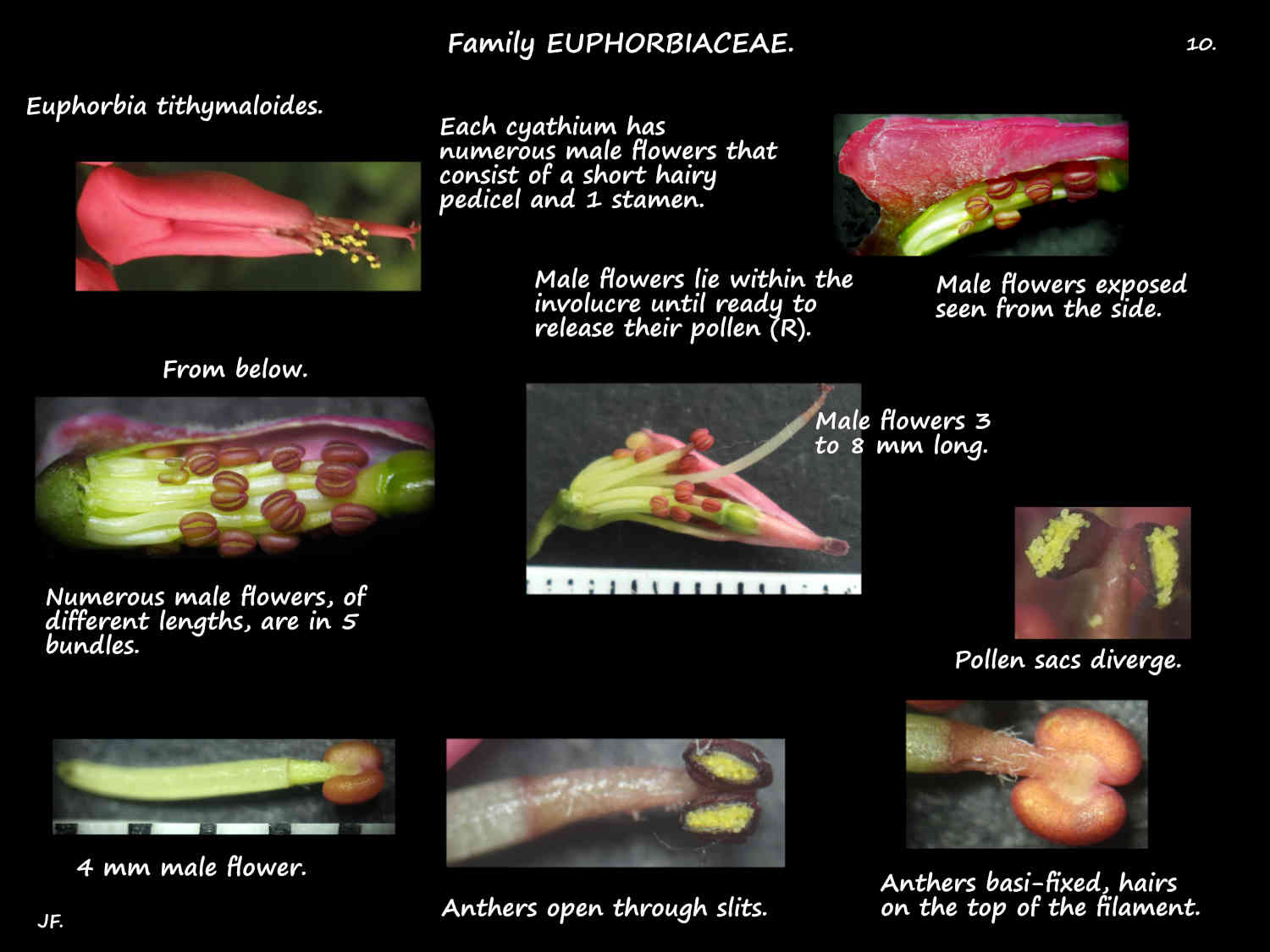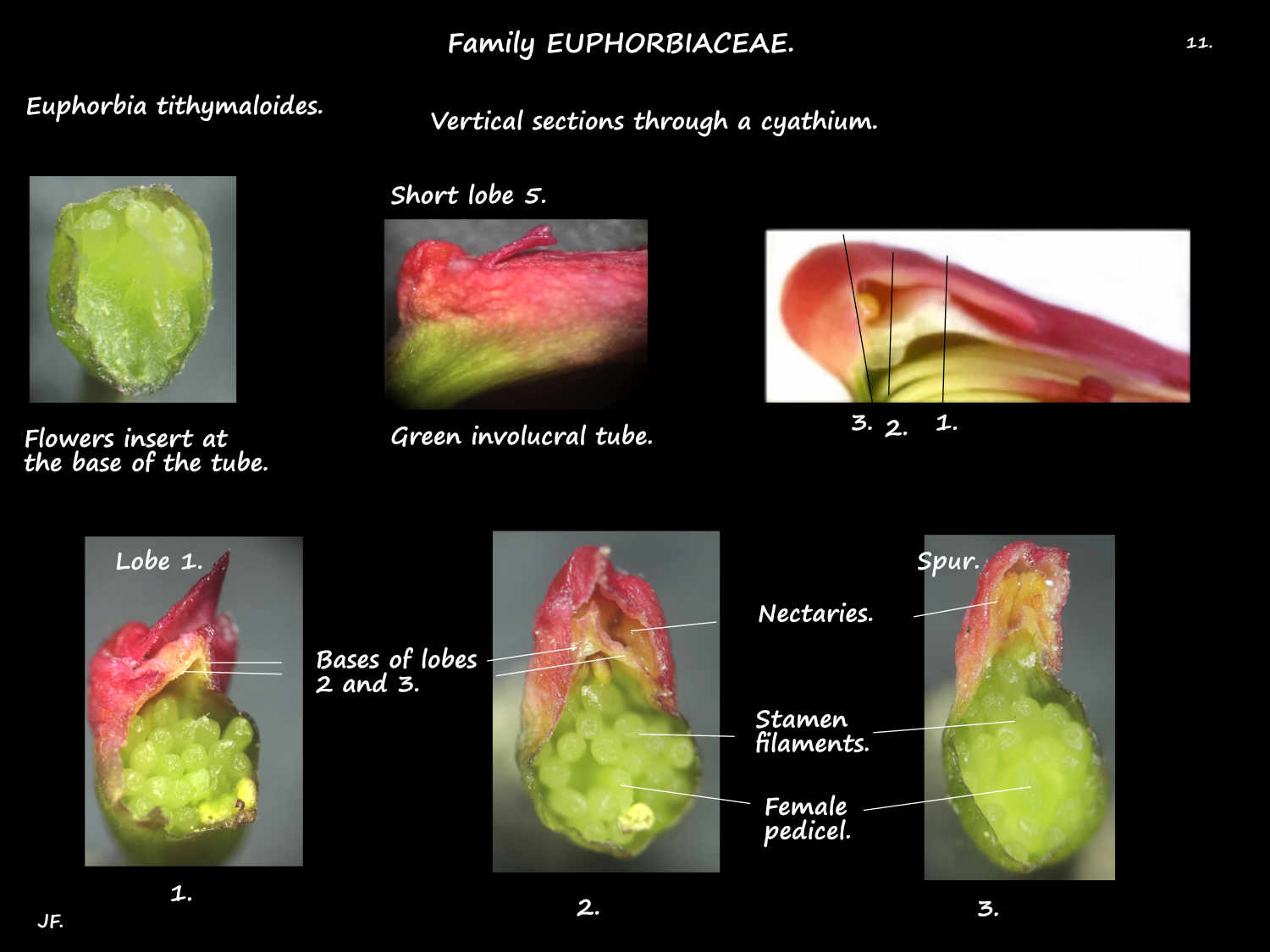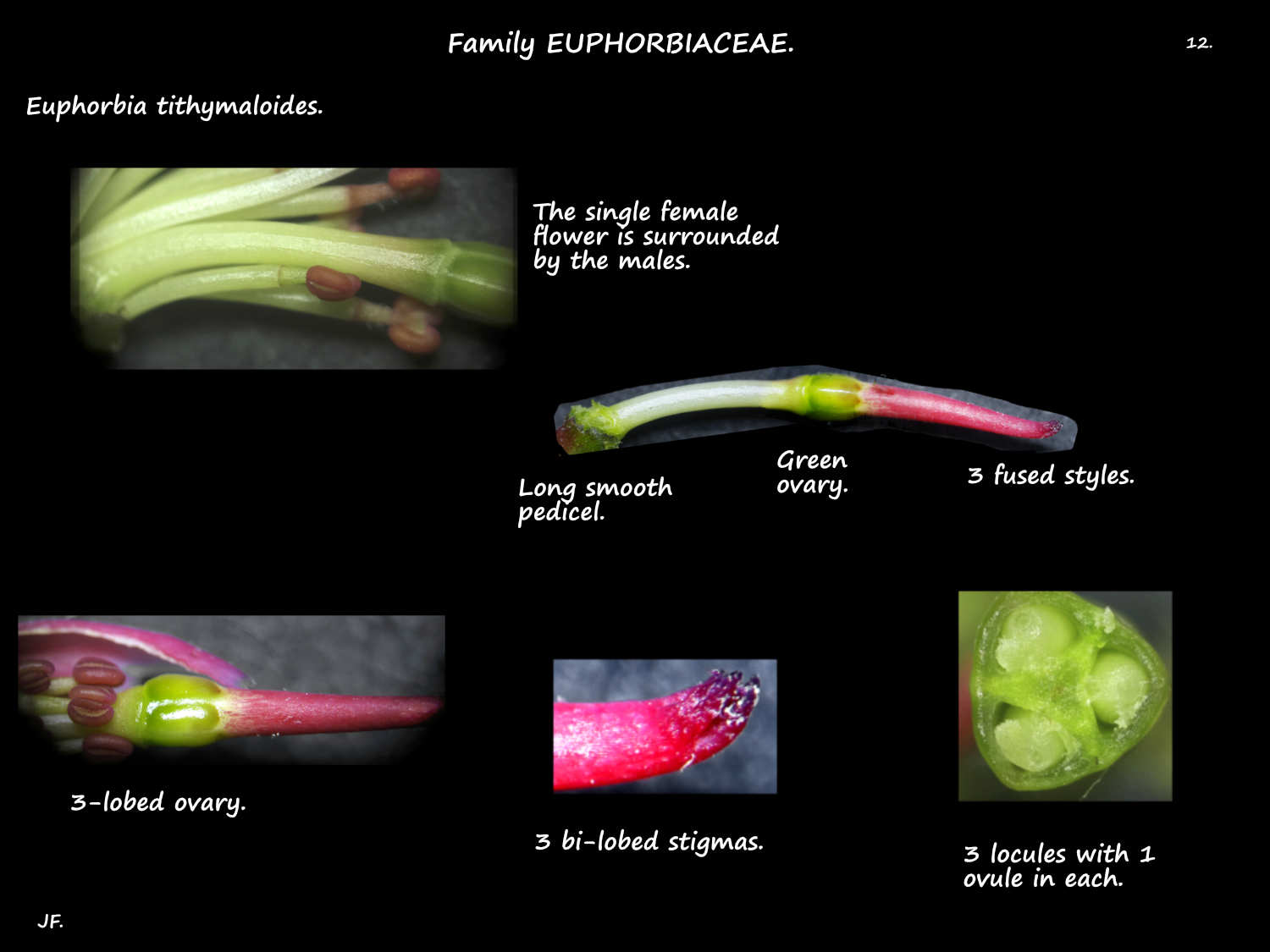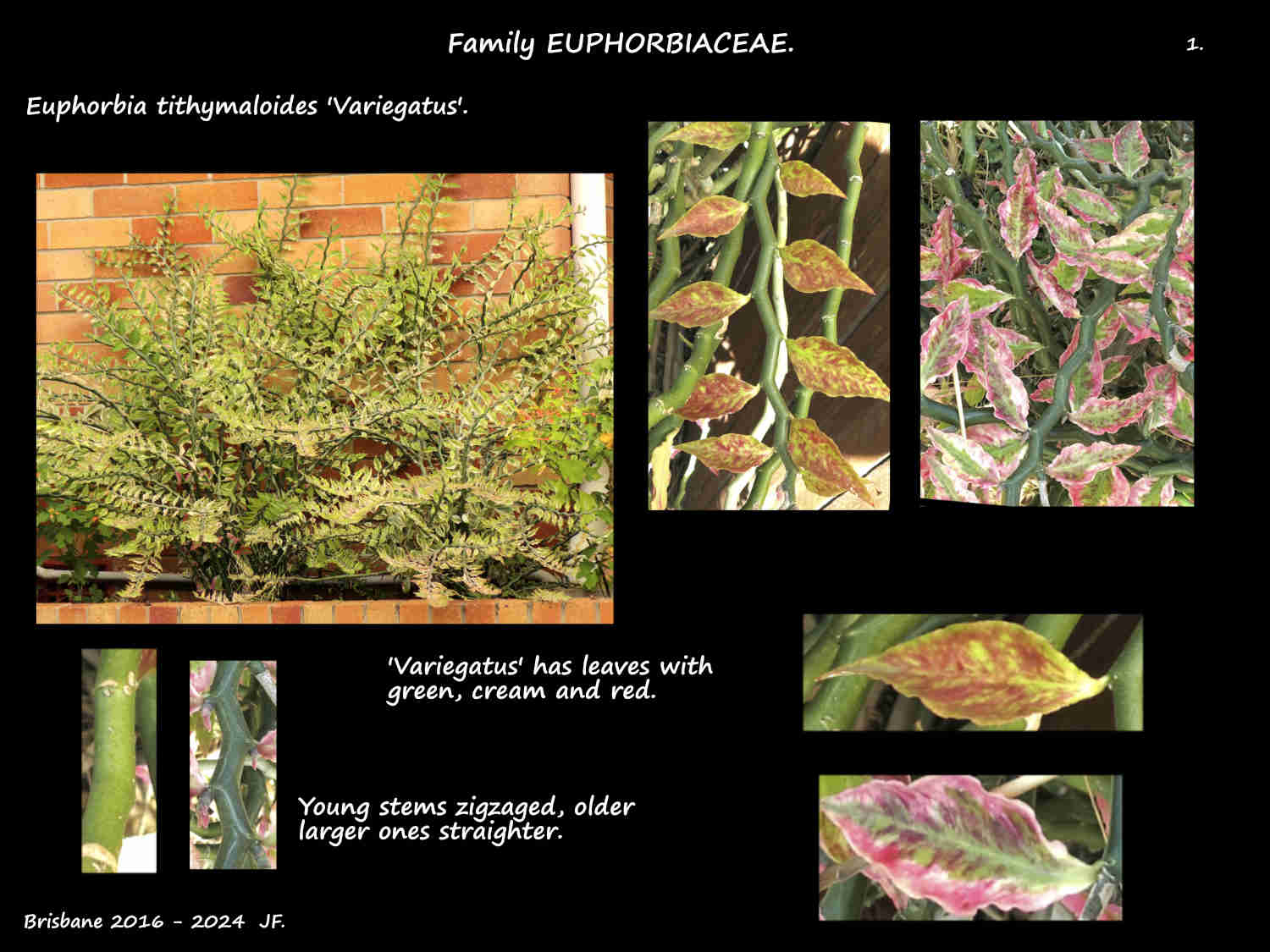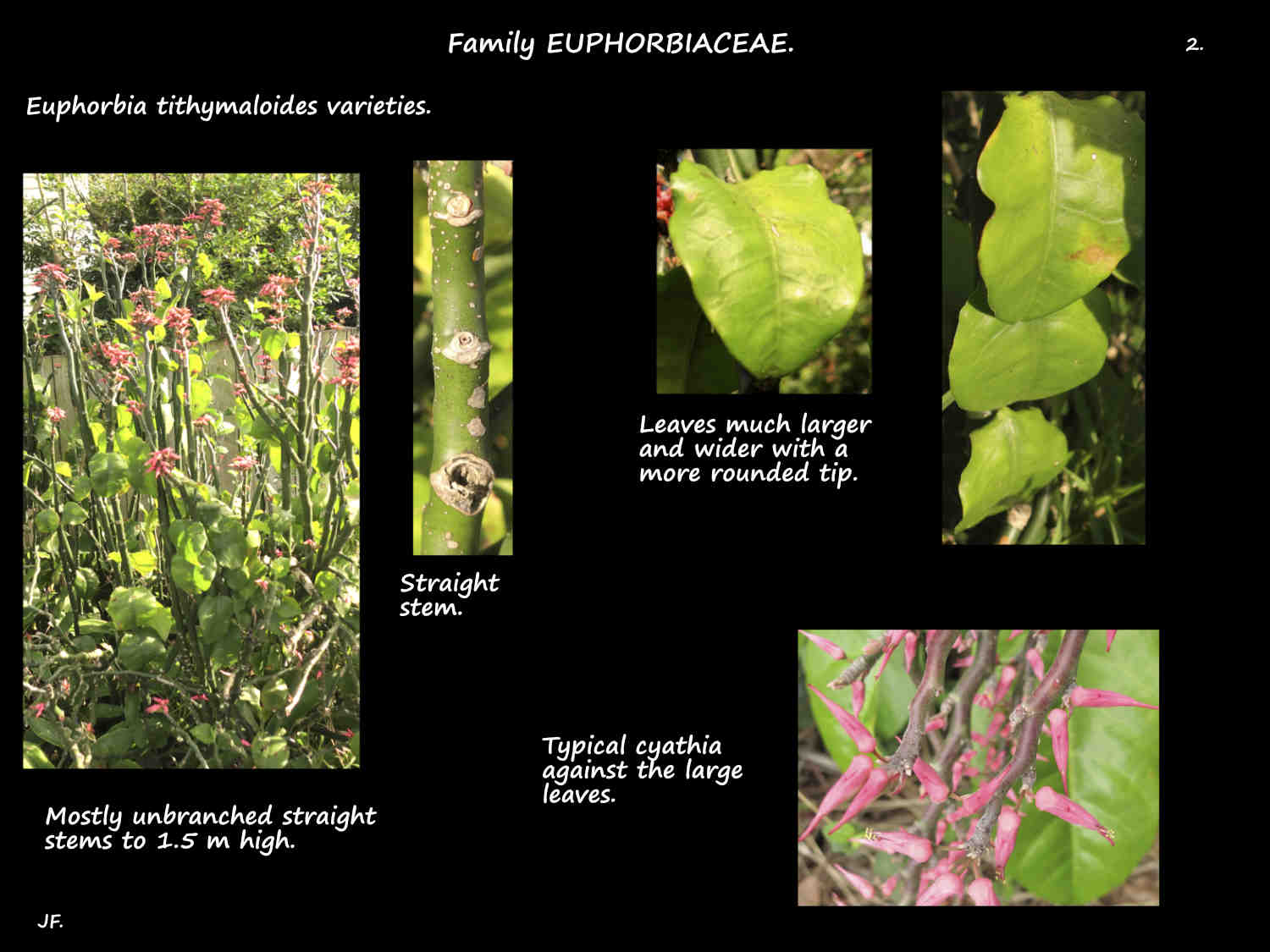Euphorbia tithymaloides.
The 14 species in the Pedilanthus genus, including Pedilanthus tithymaloides, have been moved into the Euphorbia genus.
However the Zigzag plant or Slipper Spurge is still commonly known as Pedilanthus.
They are from the tropical areas of North and South America.
The erect, perennial shrubs are often around 1 m high and wide.
A few are up to 3 m high and 1 m wide and they can from clumps.
The thick round stems may be unbranched but they typically branch a lot at the base.
Young stems are green and fleshy while older ones become greyish-brown and woody.
The stems can be almost straight to obviously zigzaged.
Young stems and leaves have simple hairs.
Parts exude a white latex when cut.
The simple leaves are alternately arranged in 2 ranks (distichous).
New leaves have no petiole and older ones may have none or one a few mms long.
On the stem beside the leaf base are small deciduous stipules under 1 mm long.
The deciduous leaves are ovate, lance-shaped or slightly oblong.
Up to 10 (16) cm long and 4 or 5 (10) cm wide they have a wedge-shaped base and the tip tapers to a blunt point.
The midrib is sharp and prominent on the lower surface (keeled).
The smooth edge may be wavy.
Young leaves have hairs on both surfaces with some usually present on older leaves.
Terminal and upper axillary inflorescences are usually on bare stems.
They branch dichotomously with both branches at each fork being equal in length.
The ultimate branches are cymes with the terminal flowers opening first.
Each cyathium is on a short smooth peduncle.
On, and at the base of the peduncle are ovate bracts around 6 mm long.
They are red with a green base and a greenish midrib that is keeled on the outer surface.
There are short crinkly hairs on the outer surface and around the edge of the inner surface.
The reduced flowers are in an involucre of 5 bracts, the whole structure being a cyathium 1 (1.5) cm long.
The involucre is shaped like an upside-down slipper with an enlarged heel and a long pointed toe.
The greenish bases of the 5 bracts form a short roughly vertical tube.
This bends through 90 degrees with the swollen upper part of the curve forming the 3 mm ‘heel’ or spur.
The bright red roughly horizontal section has the free ends of the 5 involucral bracts.
The middle (upper) one is short and wide with 3 tiny lobes on the end.
The 2 side ones are longer and narrow with short hairs on the edges.
The remaining 2 are larger and longer and curve around the reproductive parts.
They are free above but fused for most of their length underneath.
At the top of the tubular section and in the spur are 5 (2 to 6) large pale yellow nectary glands.
Each involucre has numerous male flowers around 1 longer female one.
Male flowers, of different lengths, are on a hairy pedicel around 3 mm long.
Each consists of a stamen with a short basi-fixed anther that opens outwards..
The central female flower is on a smooth pedicel around 7 mm long.
It has an ovary with 3 locules with 1 ovule in each.
The up to 12 mm long styles are usually fused and hold the 3 bi-lobed stigmas.
The fruit are a 6 mm ovoid capsule with 3 lobes and 3 seeds.
*******************************************************************
Plants of the World Online recognises eight subspecies with 7 from the Caribbean.
The main differentiating features are the leaves.
E. thymaloides in particular has leaves that can vary greatly from nearly linear to heart-shaped, obovate or almost round.
They can have a long or short pointed tip or a blunt one.
Euphorbia tithymaloides subsp. tithymaloides has straight or slightly zigzaged stems, leaves to 16 cm long and young leaves that may have dense hairs.
In contrast Euphorbia tithymaloides subsp. smallii has very zigzaged stems and leaves up to 7 cm long.
There are a number of forms and cultivars including one with only green leaves and ‘Variegatus’ with white and red on the leaves.
J/F.

